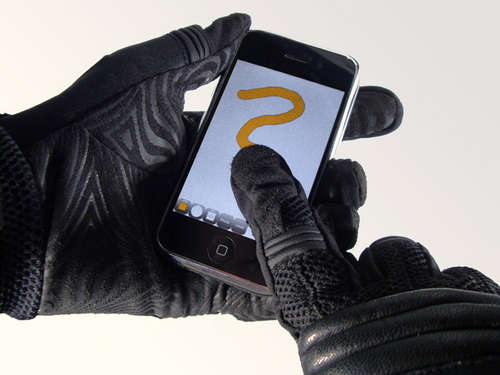Catch It Keep It Marathon Wednesday Morning 2/24

If you haven’t had a chance to watch one of the best TV shows of all time (personal opinion), set your Tivos and Comcast DVRs to Science Channel for an early-morning Catch It Keep It marathon. Starting at 6am EST, you can see all ten episodes of the phenomenal first season back to back.
Watch as Zach and I torment three hopeful builders by dangling their prize in front of a myriad of massive and massively destructive mechanisms. Lots of great engineering, physics, science and smashing demonstrations done in fun ways. Rooftop ramps, flying cars, thermite, steam rollers and more!
And if you miss it here, you can always catch it via iTunes or Amazon.

Tool Deals: Milwaukee 60% (or more) Blowout
 Amazon’s 60% off Milwaukee sale has a lot of tempting prices on it.
Amazon’s 60% off Milwaukee sale has a lot of tempting prices on it.
I’ve been on the lookout for a lightweight driver and this Milwaukee 12v kit is a perfect fit. Bosch has an almost identical drill (and Rigid, it appears), which I used quite a bit while filming Rock and Roll Acid Test. I was skeptical about the small size, but the lithium ion battery actually pushes quite a bit of power and did a great job on some big builds. Too bad we weren’t able to keep those tools when we finished filming. The Bosch stuff is great.
List price $249, on sale for $99 – that’s a 60% discount. I’m down with that!
There’s a 3/8″ chucked version for $30 more if you don’t have/want the quick-release bits.
Here’s another way to save a bunch on cordless tools: buy the battery-less models of the same brand you already own. If you’re a Makita person, or DeWalt or whatever, search for “bare tool” and find the tools that you can pop your battery onto. Try to make sure they’ll fit – more and more manufacturers have made universal batteries for their tool lines, but it’s not always the case.
Easy DIY Photography Studio Lighting Projects

The folks at diyphotography.net have a good post with seven easy DIY projects that will help beef up your photo studio. Beauty dish, dual speedlight mount, ring flash, softbox, snoot, suction cup mounts (very clever), and a PVC light stand. All of them are useful tools.
I like the beauty dish project as an easy, cheap way to get that softbox look. These things can range in price from the $50 range to a well over $200. The version described here will cost next to nothing, especially if you source the supplies at the local thrift store. Here’s a good example of what a beauty dish does for lighting:
(no, that’s not me – it’s just an example I found online)
Free LED Flashlight at Harbor Freight
UPDATE: You can find an active coupon for this deal on the Harbor Freight website. Good from April 15 to May 16, 2010.
Just saw this last night – print this coupon out, bring it to your nearest Harbor Freight tools and get a free nine-LED aluminum flashlight. A handy tool and good for dismantling and using for projects. Or use it as a bike light. I’ll be stopping by for mine later today. Offer good until Mar 24, or while supplies last.
If you’re looking for a good deals on name-brand tools, check out Amazon’s Tools & Home Improvement Value Center. A grab bag of discounts on quality goods. One example: Milwaukee 18v cordless circular saw w/o battery: List $312, discounted price $41.55.
Not a bad deal either: Thermo Tech infrared thermometer with a 12:1 distance to spot ratio and a top limit of 1022ºF – perfect for pizza ovens (my current IR thermometer craps out at 600º). 50% off today on Amazon. $39.99 final price.
Make Your Own Cardboard Medieval Trebuchet

Do you want to launch a softball 50-60 feet without having to get down and dirty cutting wood, metal, and using power tools? Here’s an easy way to build a fairly sizeable trebuchet out of cardboard and a few other basic materials.
For this project, the components are glued together and assembled with bolts for the axles. A few small pieces of PVC are used to create axle bearings–this could be improved by using skateboard ball bearings instead (side note: it’s crazy that you can now get a single skate bearing for 99 cents). Also, a commenter makes a great point that adding wheels will allow the trebuchet to rock as the counterweight falls, which allows the counterweight to follow a much more efficient linear path and increases the capabilities of the machine.
Glued corrugated cardboard develops a decent amount of strength while remaining fairly lightweight. And as anyone that watched Punkin Chunkin knows, lower weight means faster speeds. Keeping the throwing arm as light as possible is key for massive launches.
Follow all the steps on the Instructable here: Cardboard Trebuchet. Also, I lied about the power tools part. You may need a drill to create the opening for your axle. No big deal.
And if you want something a little more desktop sized (plus kill some time at work), check out the Paper Trebuchet instructable too.
Simulated Driving, Flying and Sailing With Total Freedom – Rig of Rods
Rig of Rods is an interesting piece of software. It’s an open source car/plane/boat simulator with a number of user-made vehicles and areas you can explore. The vehicles themselves, though, use “soft-body physics” – the wheels and chassis are flexible real-time objects that respond to the environment. A collision can deform them. The flight simulator uses advanced blade physics and the boating uses bouyancy calculations for realistic hull simulation.
Beyond that, there are currently over 2000 user mods (it’s been around a couple years so the library is built up). Being open source, you can go crazy building your dream vehicle and testing it out. I like that a lot.
I also like that it’s free. And it works on Mac.
And I LOVE that you can rock crawl.
Download it here: Rig of Rods.







Quickly Modify Your Gloves To Work With Your iPhone

After spending a bone-chilling week in NYC, freezing my hands every time I had to answer a phone call, I started looking for a solution to using this wonderful iPhone while not losing any digits to frostbite.
Turns out, there’s a simple solution: conductive thread.
The iPhone’s touchscreen is capacitative, where the slight electrical charge in our skin interacts with a slight electrical charge behind the glass screen. This point of interference is registered and processed. Wearing gloves insulates that electrical transfer from happening.
By adding conductive thread to the fingertip of your glove, the electrical interference is once again able to take place. Here are the super simple steps from Instructables.com
Supplies
You will need:
A glove.
A needle.
12″ (30cm) of conductive thread. (TIP: If you don’t want to buy a whole spool, you can buy a few feet much more affordably from SparkFun with the Lilypad Bobbin.)• Sew a few stitches in the finger of your glove.
On the outside try to make the stitches pretty close so it only touches the screen in a smallish area (about 1/4″ or 6mm in diameter.) This will help your finger touches be more accurate.Tip: Don’t make it too small! The iPhone, for example, will ignore small touch areas. If it doesn’t seem to work very well, try increasing the size of the stitches on the outside.
On the inside of the finger, it’s actually good for it to be messy.
3-5 stitches should be enough.• Leave some extra inside the glove.
You want to make sure the thread touches your finger or your hand on the inside, so leave some extra. Leave danging thread on your knots, etc. You might even tack a bit to the lining of the glove• Repeat on other fingers (optional)
If you use other fingers or thumbs to use your screen repeat the step on them too.
That’s it! Not as accurate as glove-less iPhoning, but much warmer. Now, to figure out how to stop clumsily dropping my phone when I’m wearing winter gloves..
Catch It Keep It Season One – Now Available on iTunes and Amazon
 Now you can catch any episodes you missed the first time around. Watch me and Zach challenge a team of contestants to build something that can save their prize from near-certain devastation. And at the end, I get to see if I’m able to beat my own “method of destruction” too. Full of fun science, physics, engineering and destruction. 10 great episodes. Science Channel.
Now you can catch any episodes you missed the first time around. Watch me and Zach challenge a team of contestants to build something that can save their prize from near-certain devastation. And at the end, I get to see if I’m able to beat my own “method of destruction” too. Full of fun science, physics, engineering and destruction. 10 great episodes. Science Channel.
- iTunes: Catch It Keep It: Season One (will open iTunes)
- Amazon: Catch It Keep It: Season One (watch online or download)
Super Slow-Mo SawStop Demonstration on Timewarp
The good dudes at Discovery’s Timewarp TV show filmed a hide-your-eyes segment about the SawStop, an table saw with an electronically controlled safety brake that uses the inductive capabilities of the human skin to immediately stop the blade. Watch as the saw’s inventor offers to sacrifice his own finger to demonstrate the safety of his creation.
Pizza Photo Gallery: 36 Pizzas I’ve Made (and Sourdough Crust Info)

Hey pizzaphoto readers: If you like photos of pizza, make sure to follow me on twitter here.
Pizza: One of my favorite things to make. There are so many challenging variables in creating a perfect pizza, many that are nearly impossible to control completely. Oven temperatures, yeast activity, ambient humidity, protein content in the flour, etc. As hard as it is, even a failed pizza tastes pretty amazing. But when the variables all line up, it’s a truly magical experience.
I’ve worked in pizzerias in high school and college, taken pizza classes, and spent countless hours reading books and websites in search of the perfect pizza. And still, after many years of learning and experimenting and eating lots of great pies, I am still working to master many specific parts of the process. Currently, I’m working on using wild yeast for a rich flavorful sourdough. The first attempt worked out great–made the best batch of pizza I’ve ever made, but the second time the dough lacked the elasticity and strength to hold itself together well, and pulled apart easily while being shaped. Regardless, we cooked on the grill and the pies turned out very tasty.
Two resources that I’ve found that have been a good guide: the A16 Pizzeria cookbook (my favorite pizzeria in San Francisco), and S. John Ross’ Sourdough Bread: How To Begin website. And I just upgraded to a KitchenAid mixer finally, with 575 watts of dough-kneading power under the hood. I hope to have a solid grasp on the sourdough by the Spring. And then its back to the garden to grow those tomatoes…
Here’s a photo recap of four years of tasty pizzas I’ve cooked and enjoyed.




